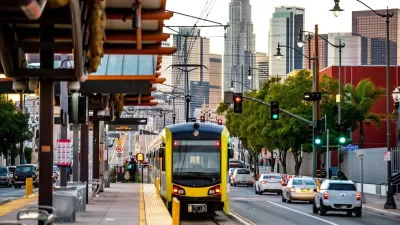Fears that low gas prices and increasing vehicle miles traveled would negatively affect transit ridership might have come true in the first half of the year, according to data provided by the American Public Transportation Association.
Progressive Railroading reports: "While total public transit ridership decreased 0.9 percent during the first six months of 2015 compared with the same period last year, heavy-rail ridership rose 0.5 percent, according to the American Public Transportation Association's (APTA) most recent ridership report."
"A total of nine out of 15 heavy-rail systems reported increases. Cities logging rail ridership increases included San Francisco, up 4.3 percent; Atlanta, up 3.1 percent; and Jersey City, N.J., up 2.1 percent," adds the post.
APTA President and Chief Executive Officer Michael Melaniphy provides a soundbite in the post, speculating that some of the 50 million fewer rides in the first half of 2015 might be because people have returned to driving as gas prices have dropped.
Astute Planetizen readers will recall the debate that followed 2014's report on transit ridership from the APTA, which claimed record levels of transit ridership.
FULL STORY: APTA: 5.3 billion transit trips in first half of 2015; 71 percent of transit ballot initiatives pass

Study: Maui’s Plan to Convert Vacation Rentals to Long-Term Housing Could Cause Nearly $1 Billion Economic Loss
The plan would reduce visitor accommodation by 25,% resulting in 1,900 jobs lost.

Alabama: Trump Terminates Settlements for Black Communities Harmed By Raw Sewage
Trump deemed the landmark civil rights agreement “illegal DEI and environmental justice policy.”

North Texas Transit Leaders Tout Benefits of TOD for Growing Region
At a summit focused on transit-oriented development, policymakers discussed how North Texas’ expanded light rail system can serve as a tool for economic growth.

Paris Bike Boom Leads to Steep Drop in Air Pollution
The French city’s air quality has improved dramatically in the past 20 years, coinciding with a growth in cycling.

Why Housing Costs More to Build in California Than in Texas
Hard costs like labor and materials combined with ‘soft’ costs such as permitting make building in the San Francisco Bay Area almost three times as costly as in Texas cities.

San Diego County Sees a Rise in Urban Coyotes
San Diego County experiences a rise in urban coyotes, as sightings become prevalent throughout its urban neighbourhoods and surrounding areas.
Urban Design for Planners 1: Software Tools
This six-course series explores essential urban design concepts using open source software and equips planners with the tools they need to participate fully in the urban design process.
Planning for Universal Design
Learn the tools for implementing Universal Design in planning regulations.
Smith Gee Studio
Alamo Area Metropolitan Planning Organization
City of Santa Clarita
Institute for Housing and Urban Development Studies (IHS)
City of Grandview
Harvard GSD Executive Education
Toledo-Lucas County Plan Commissions
Salt Lake City
NYU Wagner Graduate School of Public Service




























